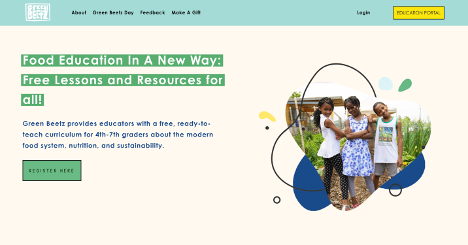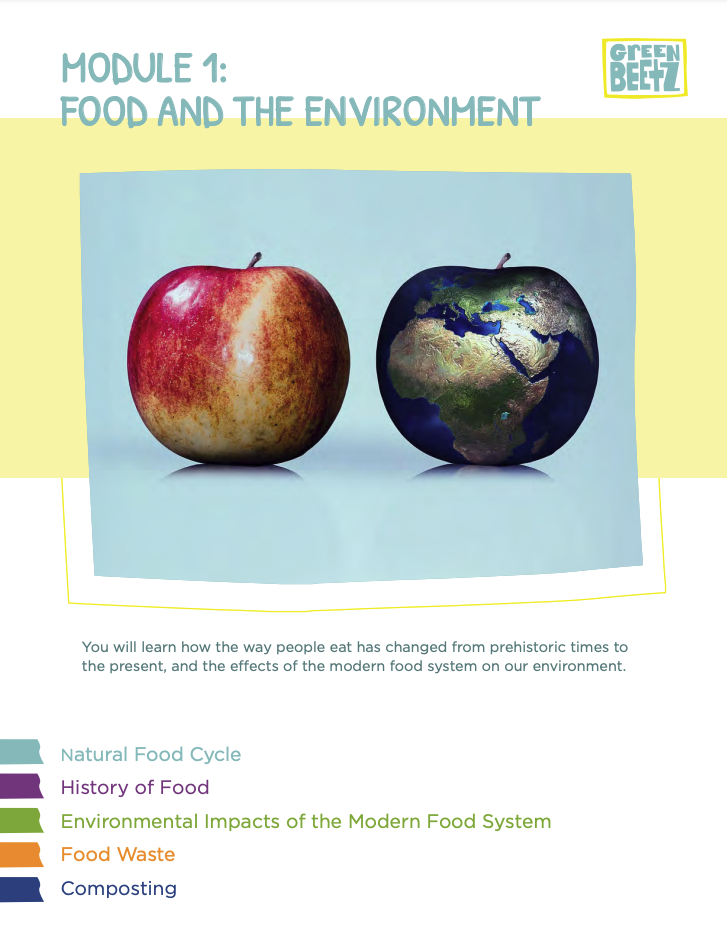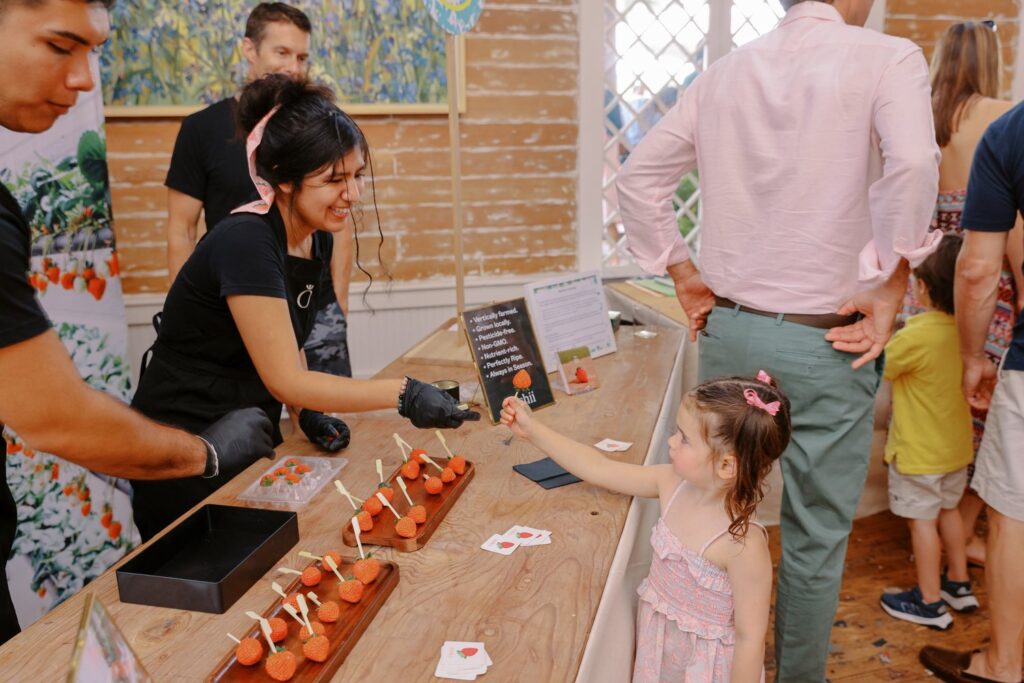The Patatas – An Education Solutions Consultancy
Green Beetz: Revolutionizing Food Education

We are thrilled to have had the honor of interviewing Kira Cohen-Milo, M.S., a pivotal figure at Green Beetz since 2015. Kira’s career was well-founded by her University of Georgia degree in Biological Science and Horticulture and subsequent degree in Nutrition and Public Health from Columbia University. Her years of working in farmers markets throughout the California Bay Area and New York City cultivated a deep-rooted connection to regional and sustainable agriculture. Kira’s admiration for locally grown food systems and fresh produce really took off in these bustling markets. Kira Cohen-Milo is a living example of how community involvement and environmentally friendly teaching methods can change lives. Her observations should clarify the critical connection between community empowerment and environmental education in the Green Beetz program. Join us as we explore Green Beetz journey, experiences, and goals for using education and sustainable agriculture to create a more connected, greener future.
What is Green Beetz?
To educate and empower young people about food, nutrition, and sustainability, an innovative project has gained popularity. Established in 2013 by psychiatrist Dr. Anna Chapman, restaurateur Andrew Chapman, and entertainment veteran Tracey Kemble, Green Beetz has grown to become an essential tool for schools throughout the city, with concentration on grades 4 through 7.
At the heart of Green Beetz lies a curriculum meticulously designed to transcend traditional notions of food education. The organization’s mission highlights that food serves as more than just nourishment—rather, it serves as a window into our surroundings, our physical selves, and society at large. When asked how they came up with the three modules, Kira said, “There were originally four modules, but around the pandemic we decided to make it three.” In the original version, they included “The Big Business of Food” but then, she claimed that the lesson plan only included “marketing & advertising around food”, “then culture of food and cooking basics”, at that point, they were already developing “food justice” and realized that maybe all of these sit together in one module— that’s when they decided to stick with the three modules which are: food and the environment, food and the body, and food and society. “They all play a role in certain aspects of our life”, Kira said.

After browsing Green Beetz’s website and registering to view their curriculum (which is by the way entirely free to access!), I came across one of their video lessons and observed that they have a distinct teaching style. I asked Kira about their unique approach to it, which she answered, “We really wanted it to not be dry & boring, we wanted it to be edgy and to have a New York vibe to it, even if it goes beyond New York. To make it fun for the kids. The Spoken Word style makes the videos really engaging.”

Green Beetz doesn’t stop at theory; practical applications are integral to their approach. They provide teachers with resources such as recipes and hands-on activities that allow students to connect directly with what they’re learning, fostering a deeper understanding of food’s role in their lives. They even created a mock farmer’s market classroom to foster a more hands-on experience, Kira said: “We would create a mock farmer’s market classroom for them, so we would order from a local produce delivery, bring in into the classroom and set up like $500 worth of produce and create fake bucks for the students and have them come and purchase a bag of groceries, and they loved this, and it’s super fun for the classrooms and the teachers.” This really isn’t just a nutrition lesson; it’s a fun hands-on experience that empowers students to choose healthy foods. They also collaborate with local produce suppliers to bring a diverse array of fruits and vegetables into the classroom. This interactive setup not only teaches them about the benefits of fresh, nutritious foods but also fosters skills in budgeting, decision-making, and food selection.
Open Source Initiative
A vital choice was made by Green Beetz in 2019 to make their curriculum open-sourced, realizing the benefits of sharing their knowledge with others outside of their local community. When asked when they made the decision to make the curriculum publicly available and free for everyone, Kira explained that it wouldn’t make sense for them to keep their curriculum a secret given the increasing number of free online curricula. Additionally, they get a lot of applications from teachers, and once they approved it, that’s the only time they send out the curriculum. However, they realized that by making the curriculum open source, more people—even those outside of New York—will be able to access it! This move has facilitated wider adoption and adaptation of their materials, aligning with their goal of maximizing their impact in food education. It has reached over 75 schools and teachers in New York, and has expanded to neighboring states. And the best part is, it is accessible worldwide and is 100% free!
Why Grades 4-7?
The curriculum is designed specifically for the 4th – 7th grade, this sparked curiosity on why they chose this range, when asked, she said that according to their research, “tweens [the age range between children and teenager] are developing a sense of agency, making their own decisions and forming preferences. But crucially, they’re still receptive to outside influences from teachers and friends.” This, Kira argues, is a contrast to teenagers. “By the time they hit their teens,” she continues, “peer pressure often takes center stage— but tweens are still open to hearing new ideas, making them prime candidates for introducing positive food choices that can have a lasting impact.” This age group is uniquely positioned to adopt positive food behaviors that can impact their health and the environment. Green Beetz originally focused on fifth graders but expanded to include grades 4 through 7 based on feedback from educators.
Sustainability
There are several compelling reasons why teaching children about the modern food system, nutrition, and sustainability is crucial, as Kira highlights. She emphasizes that “our food choices really matter,” impacting both our personal health and the health of the planet in terms of climate change and food accessibility. This knowledge empowers children to become “more grounded and aware humans,” fostering a deeper connection to their food and its journey from farm to table. Kira believes this connection is “so grounding and healthy,” promoting not only individual well-being but also the development of responsible and environmentally conscious citizens.

The Role of Teachers
Green Beetz understands that empowering teachers is the backbone of a successful program. Kira highlights their commitment to educator support when asked if they have their own teachers or if they have a program to teach teachers about the curriculum— to which she answered: “We do the latter where we teach the teachers. In the past we have held workshops and sometimes we do online workshops. And a lot of times now, at least half of our teachers are returning teachers.” They’ve moved beyond traditional in-person workshops, offering a suite of free resources like online training videos and readily available curriculum materials. This ensures teachers feel confident delivering impactful lessons. Green Beetz fosters open communication, welcoming questions and offering ongoing group training. This collaborative approach maximizes the program’s reach and empowers teachers to guide students towards healthier food choices. From workshops and online resources to direct assistance, they ensure that teachers feel equipped and confident to deliver impactful lessons. All are 100% free.
Challenges and Future Vision
Despite its successes, Green Beetz faces challenges throughout the years, she specifically stated issues like reaching more schools and gathering comprehensive feedback from educators. When asked what are the most notable challenge they have experienced, she claimed that it was the struggle of being seen and the lack of feedback‚—“Reach. Reach of schools, reach of teachers, just being seen, and also not feeling like we’re working in a void as a nonprofit. In terms of feedback, I usually just get direct feedback from the teachers that I work with, and know, which perhaps is not the most holistic feedback when I’m always hearing from the same returning educators.”
When contemplating expansion beyond their current reach, such as into Asian countries or rural communities, Green Beetz acknowledges the limitations posed by staffing and logistical constraints. Their commitment to maintaining effective operations within their means underscores the importance of sustainability in their mission. Even with the lack of manpower, they still hope to surpass these challenges that they face. In spite of everything, they are still fully committed to growing their influence and reach.
Kira shared their struggle in terms of partnerships, “we had meetings when I was in New York City with the Department of Education in 2015 and they didn’t really go anywhere even though we followed up.” It was challenging for them at the beginning, she claimed that in those 10 years in the industry, it was really a slow process, but by staying focused and grinding at it, people eventually heard more about them, and by then, partnerships grew— now, they have reached the Department of Education. They were asked to do some professional development classes, wherein they were able to reach over 100 teachers with those sessions, all are trained under Green Beetz. This is a huge thing for them as they were more exposed, fostering more potential collaborations.
Involvement of Parents and Educators
Green Beetz recognizes the vital role parents play in supporting their mission. Many parents leverage their active involvement in school parent organizations (PTOs) to champion Green Beetz’s inclusion in their children’s education, as Kira acknowledges: “we’ve had parents that are active PTO members… bringing in Green Beetz to their schools.” These proactive parents see the curriculum’s value in complementing existing school gardens, bridging the gap between classroom learning and practical application at home. Green Beetz understands the importance of educators as well. They provide a suite of free resources, including workshops, online materials, and direct support, empowering teachers to effectively deliver the curriculum. Since 2019, Green Beetz has made their curriculum open-source, further motivating educators to incorporate it into their lesson plans and cultivate a deeper understanding of food’s impact on students.
A Greener Future Ahead
Green Beetz is a shining example of cutting-edge education in New York City as it develops and grows. By fostering a more profound understanding of food and its effects at a young age, they are not only creating individuals with greater health but also a generation of knowledgeable global citizens who recognize the value of sustainable practices. Green Beetz, situated in a city renowned for its vibrancy and diversity, is laying the groundwork for a time when every child will be equipped with the information and resources necessary to make wise decisions regarding their diet and its environmental and societal impact.
Add Your Heading Text Here (Level 1 Heading)
Subtitle (Level 2 Heading)
Lorem ipsum dolor sit (Level 3 Heading)
Lorem ipsum dolor sit amet, consectetur adipiscing elit. Quisque vitae ex ut nulla aliquet pretium et id massa. Maecenas non feugiat sapien, porta sollicitudin augue. Vestibulum in lectus at nulla sodales mattis id semper orci. In hac habitasse platea dictumst. Vestibulum imperdiet lectus sit amet viverra dignissim. Phasellus dictum tempus efficitur. Nulla quis risus vel ipsum cursus consectetur.
Maecenas in porttitor neque. Donec fermentum a ligula in luctus. Vestibulum ante ipsum primis in faucibus orci luctus et ultrices posuere cubilia curae; Vestibulum ante ipsum primis in faucibus orci luctus et ultrices posuere cubilia curae; Sed vitae aliquet turpis. Donec vel erat et ligula congue convallis. Mauris ac lacus libero. Duis eget euismod odio. Nullam at dolor condimentum lacus placerat mattis. Donec sagittis sem ut tortor ultricies tristique. Aliquam posuere massa ac condimentum ullamcorper. Vivamus tincidunt tincidunt est quis finibus.

Lorem ipsum dolor sit (Level 3 Heading)
Lorem ipsum dolor sit amet, consectetur adipiscing elit. Quisque vitae ex ut nulla aliquet pretium et id massa. Maecenas non feugiat sapien, porta sollicitudin augue. Vestibulum in lectus at nulla sodales mattis id semper orci. In hac habitasse platea dictumst. Vestibulum imperdiet lectus sit amet viverra dignissim. Phasellus dictum tempus efficitur. Nulla quis risus vel ipsum cursus consectetur.
Maecenas in porttitor neque. Donec fermentum a ligula in luctus. Vestibulum ante ipsum primis in faucibus orci luctus et ultrices posuere cubilia curae; Vestibulum ante ipsum primis in faucibus orci luctus et ultrices posuere cubilia curae; Sed vitae aliquet turpis. Donec vel erat et ligula congue convallis. Mauris ac lacus libero. Duis eget euismod odio. Nullam at dolor condimentum lacus placerat mattis. Donec sagittis sem ut tortor ultricies tristique. Aliquam posuere massa ac condimentum ullamcorper. Vivamus tincidunt tincidunt est quis finibus.
Subtitle (Level 2 Heading)
Lorem ipsum dolor sit (Level 3 Heading)
Lorem ipsum dolor sit amet, consectetur adipiscing elit. Quisque vitae ex ut nulla aliquet pretium et id massa. Maecenas non feugiat sapien, porta sollicitudin augue. Vestibulum in lectus at nulla sodales mattis id semper orci. In hac habitasse platea dictumst. Vestibulum imperdiet lectus sit amet viverra dignissim. Phasellus dictum tempus efficitur. Nulla quis risus vel ipsum cursus consectetur.
Maecenas in porttitor neque. Donec fermentum a ligula in luctus. Vestibulum ante ipsum primis in faucibus orci luctus et ultrices posuere cubilia curae; Vestibulum ante ipsum primis in faucibus orci luctus et ultrices posuere cubilia curae; Sed vitae aliquet turpis. Donec vel erat et ligula congue convallis. Mauris ac lacus libero. Duis eget euismod odio. Nullam at dolor condimentum lacus placerat mattis. Donec sagittis sem ut tortor ultricies tristique. Aliquam posuere massa ac condimentum ullamcorper. Vivamus tincidunt tincidunt est quis finibus.
